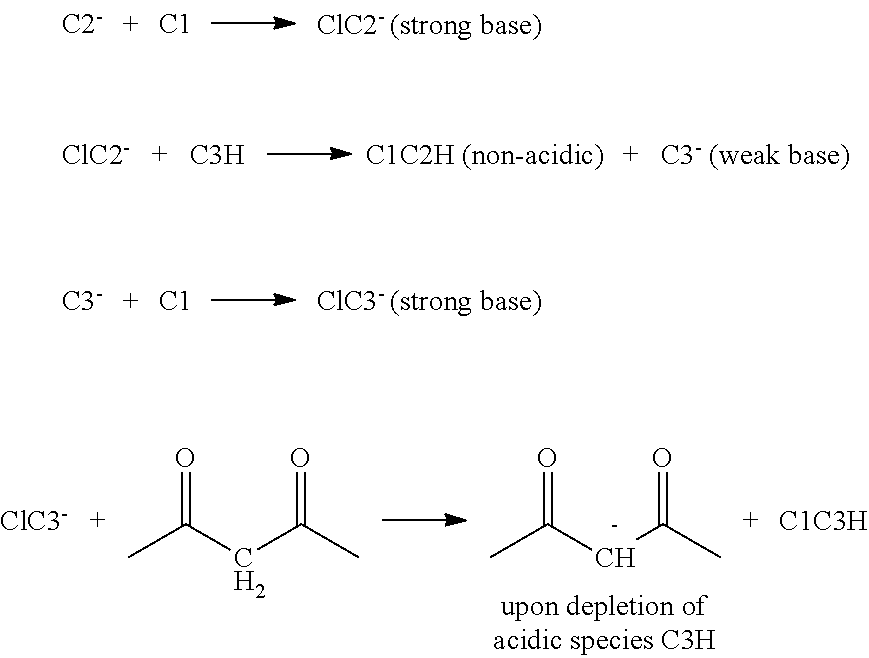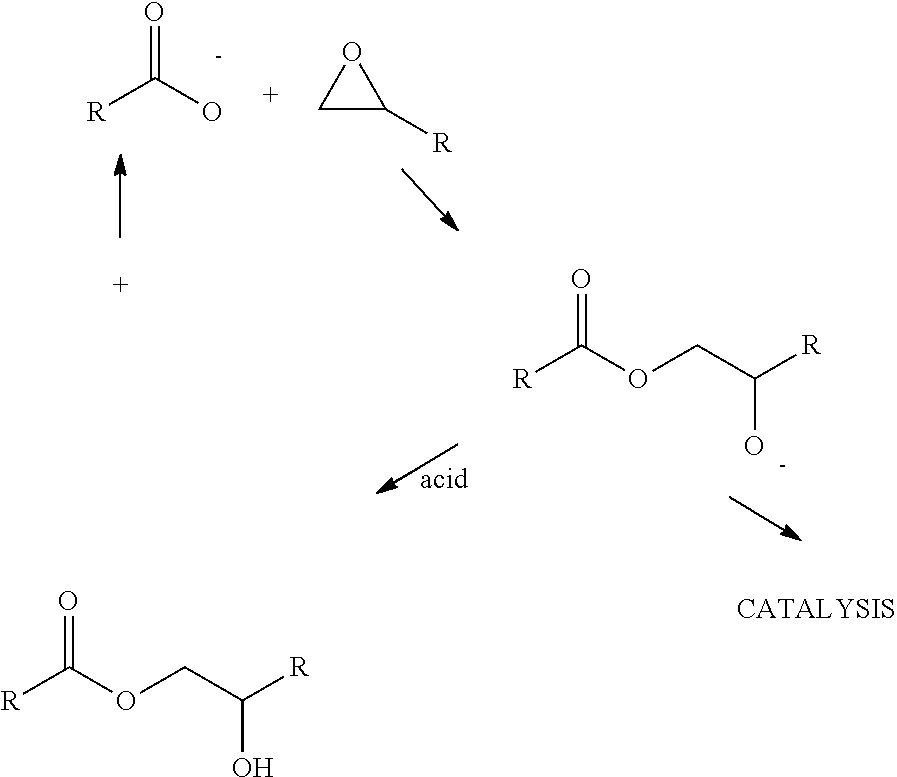Powder coating composition
a technology of coating composition and powder, which is applied in the direction of powdery paint, coating, polyester coating, etc., can solve the problems of low time-integrated fluidity of such systems, poor appearance of coatings, and limiting appearance, so as to achieve good crosslinking density, good coating properties, and good appearance.
- Summary
- Abstract
- Description
- Claims
- Application Information
AI Technical Summary
Benefits of technology
Problems solved by technology
Method used
Image
Examples
Embodiment Construction
[0048]The inventors found that the RMA powder coating composition of the invention can, compared to conventional powder coating compositions, be cured at relatively low temperatures with a high curing speed. The latent base catalyst system provides open time and good levelling at low temperatures . A latent catalyst system is a catalyst system that provides a delay of the initial stages of curing at the curing temperature. The delay is controlled by the choice of the components of the catalytic system and is chosen for a particular chosen combination of RMA crosslinkable components A and B in view of providing a preferred curing profile as described below. The RMA crosslinking reaction between components A and B requires the presence of a base, typically defined herein as a “strong base”. This strong base is a base able to catalyse the RMA at Tcur. In the present invention, as will be explained herein below in more details, such strong base is generated through a latent catalyst sys...
PUM
| Property | Measurement | Unit |
|---|---|---|
| temperature | aaaaa | aaaaa |
| temperature | aaaaa | aaaaa |
| temperature | aaaaa | aaaaa |
Abstract
Description
Claims
Application Information
 Login to View More
Login to View More - R&D
- Intellectual Property
- Life Sciences
- Materials
- Tech Scout
- Unparalleled Data Quality
- Higher Quality Content
- 60% Fewer Hallucinations
Browse by: Latest US Patents, China's latest patents, Technical Efficacy Thesaurus, Application Domain, Technology Topic, Popular Technical Reports.
© 2025 PatSnap. All rights reserved.Legal|Privacy policy|Modern Slavery Act Transparency Statement|Sitemap|About US| Contact US: help@patsnap.com



